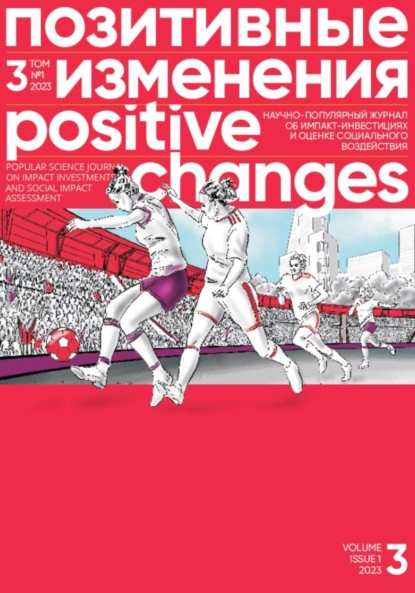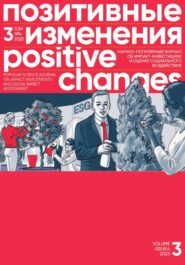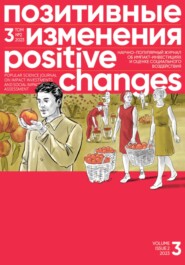По всем вопросам обращайтесь на: info@litportal.ru
(©) 2003-2024.
✖
Позитивные изменения, Том 3 №1, 2023. Positive changes. Volume 3, Issue 1 (2023)
Настройки чтения
Размер шрифта
Высота строк
Поля
STANDARD VALUES:
The standard value for the ratio is considered to be above 0.8.
3. Return on sales (ROS) is the ratio of profit (P) to Sales Revenue (SR). The figure needs to be multiplied by 100 to convert to percentage.
ROS = P / SR * 100 %
Profit (P) is the positive difference between the total revenue (which includes revenue from the sale of goods and services, fines and compensation received, interest income, etc.) and the costs of production or purchase of goods, storage, transportation, sales of the organization’s goods and services. Profit = Revenue – Expenditure (in monetary terms).
In the balance sheet, profit is shown on line 2300.
Sales Revenue (SR) is the amount of money received by the enterprise when selling goods and services for the period. It is defined as the volume of goods and services sold multiplied by their selling price.
In the balance sheet, revenue can be found in line 2110.
The essence of the Return on Sales ratio is that it comprehensively reflects the efficiency of material, labor and monetary resources utilization. A decrease in ROS means either a decrease in sales or inefficiency of economic activity. If an enterprise sells different types of goods and services, then the revenue is summed up by type of goods and services.
STANDARD VALUES:
On average, you can be guided by these values:
• 1–5 % is a low indicator; measures must be taken to improve return on sales;
• 5–20 % is the average, the company is able to maintain stable operation;
• 20–30 % is high economic efficiency of activity.
CALCULATION OF AN ORGANIZATION’S FINANCIAL RATING
Fill in the table with figures indicating the financial condition of the social impact enterprise (SIE) (1 point for compliance, 0 points for non-compliance with the standard), see Table 4.
Table 4. Figures indicating the financial condition of the social impact enterprise (SIE)
When calculating the first two ratios, a social impact enterprise may find itself in a situation where the denominator is zero. We have encountered this situation in practice when consulting social entrepreneurs.
This situation may occur in the calculation of Current Liquidity ratio in absence of short-term liabilities, and in calculating the Financial Sustainability ratio – in absence of borrowed funds. And here, compared to a pure business model for a social enterprise, we have to make an exception from the general rules.
In the standard business model, the existence of short-term liabilities and loans indicates the expansion of the financial resource raised, through the use of money provided by partners or banks, which is considered the right decision for business development. In the case of a social enterprise, however, maximizing profits by borrowing funds is not the key. The key is to have the resources for pursuing one’s social mission.
If the denominator in the Current Liquidity or Financial Sustainability indicators equals zero, it was decided that for social entrepreneurs these indicators can be counted as meeting the standard. A score of one is assigned on these indicators. It makes financial sense. If the current liquidity is within the standard value, this means that the company has no problems meeting its obligations (liabilities are paid-up and equal zero). The standard value of the Financial Sustainability ratio means the organization uses only its own funds in the capital structure, which translates to zero risk of default on loans.
Next, we calculate the final score by using the following formula:
S = 0.4 * CL score + 0.3 * FS score + 0.3 * ROS score
Based on the final economic sustainability score, enterprises can be divided into 3 classes in terms of subsidies:
• first-class organizations – there are no doubts about subsidizing these;
• second-class organizations – subsidies require a balanced approach;
• third-class – subsidizing these is related to excessive risk.
The final score S affects the organization’s rating:
The score of 0.7 to 1.0 means a social enterprise of the first class of economic stability;
The score of 0.4 to 0.6 means the second class of economic stability;
The score below 0.4 means the third class of economic stability.
To improve stability, we analyze which indicators contributed to reduced scores, so we can affect them during the next reporting period.
A good compensation for low (or absent) economic stability score can be a solid theory of change for the indicators involved in the evaluation.
CASE STUDIES
Let’s discuss the application of this evaluation using the example of organizations receiving consultations as part of the launch of the methodology. The balance sheet data below is based on the actual data of the organizations, but shows the actual indicator values.
CASE 1
The organization has been manufacturing and selling products for people with disabilities for several years, and it is planning to expand the business, but no investments have been made towards the expansion so far.
We use the balance sheet data to calculate three ratios (see Tables 5, 6, 7).
Table 5. Current liquidity ratio
Table 6. Financial sustainability ratio
Table 7. Return on sales ratio
We then use these ratios to calculate the final score and determine the economic stability ratio (see Table 8).
Table 8. Calculated economic stability ratio
S = 0.4 * CL score + 0.3 * FS score + 0.3 * ROS score = 0.4 * 0 + 0.3 * 1 + 0.3 * 1 = 0.6
Conclusions on the calculated economic stability ratio:
Current liquidity falls outside the standard range of values, exceeding the upper limit due to the volume of inventories (large volume of finished products and materials for production). This ties up money unreasonably. To improve the indicator, the organization needs to improve efficiency of inventory management, cutting stocks by half at least. The high stocks level may be indirectly caused by the scheduled business expansion, but this requires further checks. If the overstocking is indeed the result of one-off management decision, the following periods will bring the current liquidity ratio towards the standard value by increasing the turnover.
The company falls into the second class of economic stability (S = 0.6); improving this score requires a specific action plan to increase current liquidity.
CASE 2
The organization opened a second office in 2022, where people with disabilities provide services. The first office has been up and running successfully for several years. The second office required major financial investment at the beginning of the year, for renovating and equipping the premises. It opened towards the end of the year.
We use the balance sheet data for 2022 to calculate three ratios (see Tables 9, 10, 11).














